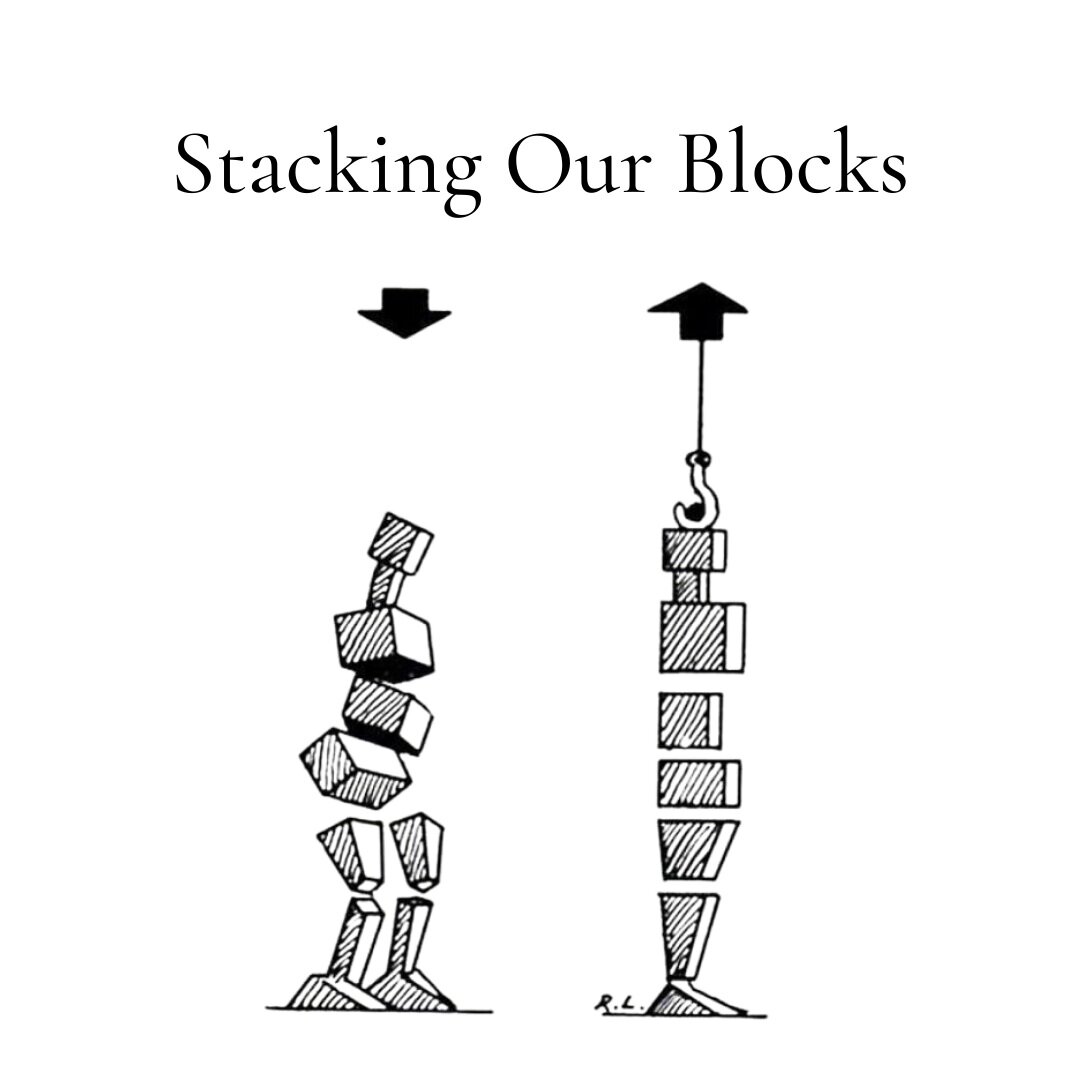Finding Your Neutral
Posture. We all want it to be better, but finding it can be quite tricky. When we talk in Pilates, the word neutral is used frequently. In my mind, this refers to the natural state of your spine. We all have differences in our spine but there is a range of curvatures that is considered “normal” for each part of your spine: the neck, mid-back, low back and pelvis. These have angles that can be measured on X-rays. Your back might fall into the “normal” range or you might have more or less of a curvature against these standards. Our goal in Pilates is to help you achieve a more upright and supported posture. We don’t want to force your spine but instead gently nudge and retrain you back to healthy alignment. We don’t have X-ray vision but our eyes are trained to pick up on subtle differences in curvatures.
Your spinal curvatures work together. They each balance out so that ideally your ear can stand over your pelvis. There are many reasons why our curvatures might be more or less in one direction. All of these differences can affect your posture, balance and gait.
One of the first things I like to teach and bring awareness to is how you simply naturally stand. Knowing where you stand/live in space is the first part to being able to address it. This alone can be quite challenging for people as we tend to have poor proprioception for our posture. Mirrors can help a lot here!
Once you’ve identified where you are in space - it’s really helpful to learn how to move in and out of that. In order to find center, you also have to find your un-center (and yes, it’s a made up term but its works!).
Let’s Imagine that our body parts are different blocks or canisters.
Now let’s try to move them so we can learn how to stack them! Stacking them is key to improving posture, balance, and how efficiently you can move. Eventually a tall, lifted and supported posture will and can feel normal. But we aren’t robots! We learn how and when we need to call on that posture for our benefit.
Start at your feet and rock forwards and backwards and side to side - then settle in your midfoot.
Start to sway your just your legs over your feet, feeling how that shifts your balance and the rest of your torso. Start to pull your leg bones over each other and then your midfoot.
Get those hips moving! See if you can isolate standing pelvic motion and then quiet your hips over your leg canisters. Your pubic bone in front is pulling upwards and your tailbone is reaching down long.
Ribs - shift them forwards and backwards and then side to side. Ribs are tricky and this can be more complicated with faulty breathing patterns and limited rib mobility ** but see if you can notice if you tend to have your ribs behind you or puffed out in front of you.
Your shoulders rest on top of your ribs.
Your neck lifts right over your ribs and lastly,
YOUR HEAD! The center of your head is actually somewhere between your ear holes and the back of your throat. It’s not as far forward as many think. I have clients tap on the top of their skull to find center and then imagine lifting that energy up towards the sky.
Our powerhouse is critical to finding our centered lift and posture so our back can stay healthy, hydrated, and supported.
Once you find your posture standing - can you find it in a plank? In a seated position? Side lying? I’m often cueing my clients to pick up the back of their necks in planks - just like a mama cat grabs her kittens - gravity wants to take that head down! Pilates helps you gain control of your body so you can make choices about how and why you move.
Home Tips: ** Check in with yourself throughout the day! Are you doing the dishes with your back sagging in? How are your ribs stacked sitting at your desk? Do you surf on your phone with your head falling forward? See if you can bring awareness to how you are in your day to day tasks and then take a quick 5 second check-in and improve it!

